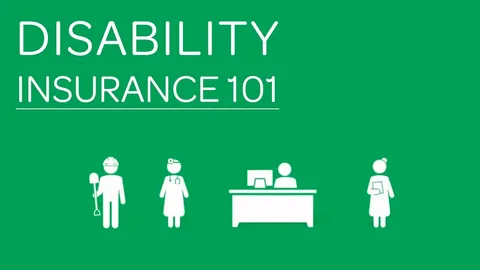Retirement Planning: How to Secure Your Financial Future
Planning for retirement is one of the most crucial financial decisions you will make in your lifetime. As life expectancy increases, ensuring that you have enough savings to maintain your desired lifestyle in retirement becomes paramount. Effective retirement planning involves understanding your financial needs, exploring various savings options, and strategically allocating your resources. This article will guide you through essential steps to secure your financial future and achieve a comfortable retirement.
1. Understanding Retirement Needs
The first step in retirement planning is understanding your retirement needs. Consider factors such as your expected lifestyle, healthcare costs, and other expenses during retirement. Experts recommend estimating how much you will need to cover your living expenses and maintain your standard of living. A general rule of thumb is to aim for 70% to 80% of your pre-retirement income. This estimate will give you a clear target for your retirement savings.
2. The Importance of Starting Early
One of the most significant advantages of retirement planning is the power of compound interest. The earlier you start saving for retirement, the more time your money has to grow. By starting in your 20s or 30s, you can take advantage of compounding, which allows your investments to generate earnings on both the initial principal and the accumulated interest. Even small contributions made early can lead to substantial savings over time. Delaying savings can result in a significant financial shortfall during retirement.
3. Assessing Your Current Financial Situation
Before diving into retirement savings, assess your current financial situation. This includes calculating your total income, expenses, assets, and debts. Understanding your financial landscape will help you determine how much you can realistically save for retirement. Create a net worth statement to visualize your financial health and identify areas where you can cut expenses or increase savings. Tools like budgeting apps can assist in this assessment.
4. Retirement Savings Accounts
There are various retirement savings accounts available, each with its own benefits and limitations. Some of the most common types include:
- 401(k) Plans: Offered by employers, these plans often come with employer matching contributions, allowing you to maximize your savings.
- IRA Accounts: Individual Retirement Accounts (IRAs) allow you to save for retirement with tax advantages. Traditional IRAs provide tax-deferred growth, while Roth IRAs offer tax-free withdrawals in retirement.
- Roth 401(k): Similar to a traditional 401(k), but contributions are made with after-tax dollars, providing tax-free withdrawals later.
Understanding these options can help you choose the best accounts to meet your retirement savings goals.
5. Creating a Retirement Savings Strategy
Developing a retirement savings strategy involves determining how much you need to save and how to allocate your investments. A common approach is to set a savings rate of at least 15% of your gross income, including any employer contributions. If you’re starting late, you may need to increase this percentage to catch up. Additionally, diversify your investments to manage risk effectively. Consider a mix of stocks, bonds, and other assets that align with your risk tolerance and retirement timeline.
6. The Role of Social Security
Social Security benefits play a vital role in retirement income for many individuals. While it’s important not to rely solely on Social Security, it can supplement your savings. Understanding how Social Security works and when to start taking benefits is crucial for maximizing your retirement income. Generally, the longer you wait to claim benefits, up to age 70, the larger your monthly payment will be. Use the Social Security Administration’s online calculators to estimate your benefits based on your earnings history.
7. Planning for Healthcare Costs
Healthcare costs can be one of the largest expenses in retirement, making it essential to factor them into your planning. Medicare typically covers many healthcare expenses, but it does not cover everything. Consider purchasing supplemental insurance to cover additional costs or exploring Health Savings Accounts (HSAs) if you are eligible. These accounts allow you to save money tax-free for healthcare expenses, providing a valuable resource during retirement.
8. The Importance of an Emergency Fund
An emergency fund is essential at every stage of life, including retirement. Having a separate emergency fund helps you manage unexpected expenses without tapping into your retirement savings. Aim to have at least three to six months’ worth of living expenses set aside in a high-yield savings account. This financial cushion provides peace of mind and ensures that you can handle emergencies without jeopardizing your long-term financial security.
9. Understanding Withdrawal Strategies
Once you reach retirement, the next step is to understand how to withdraw your savings sustainably. A common rule is the 4% rule, which suggests withdrawing 4% of your retirement savings annually. This approach aims to ensure that your money lasts throughout your retirement. However, individual circumstances may require different strategies based on your spending needs, investment performance, and market conditions. Regularly reviewing your withdrawal strategy is essential to adapt to changes in your financial situation.
10. Avoiding Common Retirement Planning Mistakes
Many people make common mistakes when planning for retirement that can hinder their financial goals. These include underestimating retirement expenses, failing to adjust savings rates as income increases, and neglecting to account for inflation. Additionally, withdrawing funds from retirement accounts prematurely can lead to penalties and tax implications. By educating yourself on these pitfalls, you can create a more effective retirement plan.
11. Staying Informed About Investment Options
The investment landscape is constantly evolving, and staying informed is key to successful retirement planning. Regularly educate yourself on investment options, market trends, and economic conditions. Consider reading finance-related books, following reputable financial news sources, or attending seminars. Knowledge empowers you to make informed decisions about your retirement portfolio and adjust your strategy as needed.
12. Engaging a Financial Advisor
If retirement planning feels overwhelming or complicated, consider engaging a financial advisor. A professional can provide personalized guidance tailored to your unique circumstances. They can help you create a comprehensive retirement plan, optimize your investment strategy, and ensure that you’re on track to meet your goals. While there may be fees associated with hiring an advisor, the potential for increased savings and better financial decisions often outweighs these costs.
13. Monitoring and Adjusting Your Plan
Retirement planning is not a one-time task but an ongoing process. Regularly monitor your retirement savings and investment performance to ensure you are on track to meet your goals. Life changes, such as job changes, marriage, or children, can impact your financial situation and require adjustments to your retirement plan. Schedule annual reviews of your retirement strategy to adapt to these changes and ensure you’re maximizing your savings.
14. Planning for Longevity
As life expectancy continues to rise, planning for a potentially longer retirement is essential. This means ensuring your savings can last 20, 30, or even more years. Consider strategies such as delaying Social Security benefits, utilizing annuities, or maintaining a balanced investment portfolio to generate income. Planning for longevity helps you avoid the risk of outliving your savings and ensures you can enjoy a comfortable retirement.
15. Conclusion
Effective retirement planning is essential for securing your financial future. By understanding your needs, starting early, and implementing a comprehensive savings strategy, you can work towards achieving the retirement lifestyle you desire. Educate yourself on various retirement accounts, monitor your progress, and seek professional guidance when needed. With thoughtful planning and proactive management, you can build a financially secure retirement that allows you to enjoy your golden years without financial stress.











One thought on “Retirement Planning: How to Secure Your Financial Future”